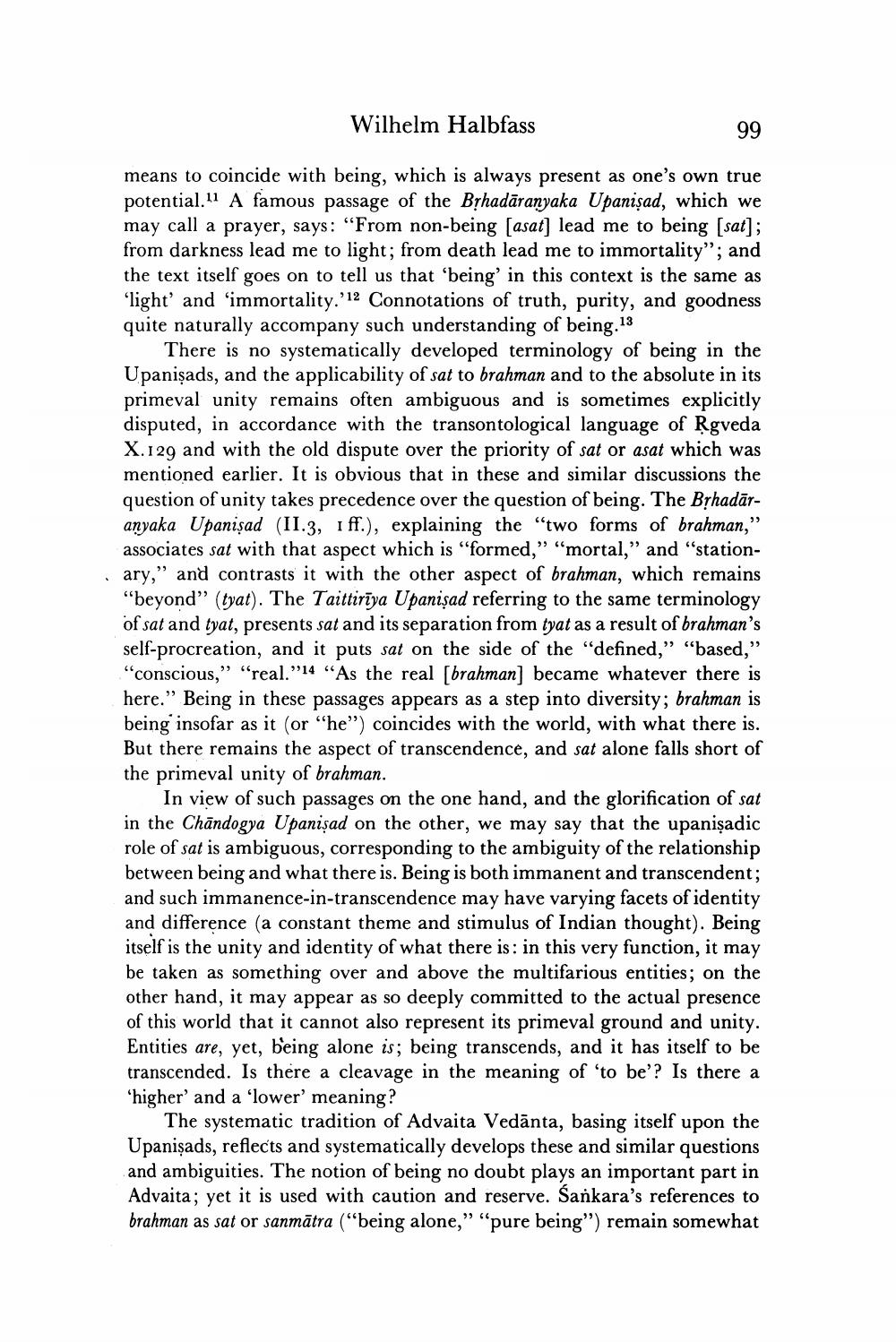________________
99
Wilhelm Halbfass
means to coincide with being, which is always present as one's own true potential. A famous passage of the Bṛhadaranyaka Upanisad, which we may call a prayer, says: "From non-being [asat] lead me to being [sat]; from darkness lead me to light; from death lead me to immortality"; and the text itself goes on to tell us that 'being' in this context is the same as 'light' and 'immortality.'12 Connotations of truth, purity, and goodness quite naturally accompany such understanding of being.13
There is no systematically developed terminology of being in the Upanisads, and the applicability of sat to brahman and to the absolute in its primeval unity remains often ambiguous and is sometimes explicitly disputed, in accordance with the transontological language of Ṛgveda X.129 and with the old dispute over the priority of sat or asat which was mentioned earlier. It is obvious that in these and similar discussions the question of unity takes precedence over the question of being. The Bṛhadaranyaka Upanisad (II.3, 1 ff.), explaining the "two forms of brahman," associates sat with that aspect which is "formed," "mortal," and "stationary," and contrasts it with the other aspect of brahman, which remains "beyond" (tyat). The Taittiriya Upanisad referring to the same terminology of sat and tyat, presents sat and its separation from tyat as a result of brahman's self-procreation, and it puts sat on the side of the "defined," "based," "conscious," "real."14 "As the real [brahman] became whatever there is here." Being in these passages appears as a step into diversity; brahman is being insofar as it (or "he") coincides with the world, with what there is. But there remains the aspect of transcendence, and sat alone falls short of the primeval unity of brahman.
In view of such passages on the one hand, and the glorification of sat in the Chandogya Upanisad on the other, we may say that the upaniṣadic role of sat is ambiguous, corresponding to the ambiguity of the relationship between being and what there is. Being is both immanent and transcendent; and such immanence-in-transcendence may have varying facets of identity and difference (a constant theme and stimulus of Indian thought). Being itself is the unity and identity of what there is: in this very function, it may be taken as something over and above the multifarious entities; on the other hand, it may appear as so deeply committed to the actual presence of this world that it cannot also represent its primeval ground and unity. Entities are, yet, being alone is; being transcends, and it has itself to be transcended. Is there a cleavage in the meaning of 'to be'? Is there a 'higher' and a 'lower' meaning?
The systematic tradition of Advaita Vedānta, basing itself upon the Upanisads, reflects and systematically develops these and similar questions and ambiguities. The notion of being no doubt plays an important part in Advaita; yet it is used with caution and reserve. Sankara's references to brahman as sat or sanmātra ("being alone," "pure being") remain somewhat




